Introduction
The University of Calabria is a comprehensive national university in Italy. It is named after the southern region of Italy. It is located in the small village of Acavalcata in the town of Lunde. It is the only school in Italy that provides accommodation. The main part of its campus is a 2,500-meter-long bridge with about 100 five- to eight-story teaching, laboratory and office buildings on both sides.
Overview
Student size: about 35,000 students.
Number of faculty: about 800 teaching and research personnel and about 700 administrative staff.
History and establishment time
On May 12, 1968, Italy promulgated Law No. 422. Against this background, the idea of establishing the University of Calabria became a reality. It was officially established in 1972. The first academic year was in operation from 1972 to 1973. The first president who took office from 1971 to 1975 was Beniamino Andreata.
School strength
Faculty: nearly 800 Teaching and research staff, who have rich knowledge and experience in their respective professional fields, can provide high-quality teaching and guidance for students.
Scientific research level: The school has strong scientific research strength, has carried out in-depth research in multiple disciplines, and has achieved certain scientific research results. For example, the in vitro 3D cell model research of OSTEONET healthy and OSTEO pathological aging bone tissue, and the VISTOFARE virtual storage technology research, etc.
International cooperation: Actively carry out international cooperation and exchanges, and establish cooperative relations with many foreign universities, providing students with broad international exchange opportunities, and promoting academic and cultural exchanges and integration.
Institutional nature
Public university.
Educational philosophy
Make the campus a place for debate and research on other experiences, establish an academic community, identify its mission to contribute to the development of knowledge, cultural education, civic progress and economic development, and pursue "campus of excellence".
Key laboratories and disciplines
Key laboratories: It has several key laboratories, such as the STAR laboratory, which is connected to the MATERIA (Materials, Technology and Advanced Research) project and is the home of the "Southern European Thomson Applied Research Backscatter Source"; there is also SILA (Environmental Laboratory Integrated System), etc.
Advantageous disciplines:
Engineering: 401-500 in the 2025 THE World University Rankings Ranked between 301 and 400, covering majors such as civil engineering, chemical engineering, electrical and electronic engineering, mechanical and aerospace engineering.
Computer Science: Ranked between 301 and 400.
Business and Economics: Ranked between 601 and 800, including majors such as economics, econometrics, business and management, accounting and finance.
Social Sciences: Also ranked between 401 and 500, including majors such as sociology, political science and international studies, geography, communication and media studies.
Physical Sciences: Ranked between 501 and 600, including majors such as chemistry, geology, environmental science, earth and ocean science, physics and astronomy, mathematics and statistics.
Faculty
The school has 14 departments covering 6 academic fields, including engineering; economics, politics and social sciences; humanities; education; science; pharmacy, nutrition and health sciences, etc., offering a total of 80 degree programs.
Ranking
2024 QS World University Rankings: 951-1000.
2025 THE Times Higher Education World University Rankings: 601-800.
Expenses
As a public university, the University of Calabria is funded by the Italian government. Students do not need to pay tuition fees, but they need to pay a registration fee of 700 euros per academic year.
Campus Environment
Geographic location: Located in the town of Rende in the province of Cosenza in the Calabria region in southern Italy, it is only a 20-minute drive from the Sira Mountains and the Tyrrhenian Sea. It has convenient transportation and beautiful natural environment. The nearby Sira Mountains, Pollino Mountains and Aspromonte Mountains provide good places for hiking. There are also ski resorts only 30 minutes away from the campus. The campus is only 60 kilometers away from Lamezia Terme International Airport and has A3 The school is connected by highways, and there are train stations and bus stations in Rende and Cosenza.
Teaching facilities: The school covers an area of more than 350,000 square meters, with more than 200 lecture halls and 18,500 seats. It also has the largest library in southern Italy. In addition to a large collection of books and periodicals, it can also provide teachers and students with electronic access to almost all international periodicals through the national book digital network.
Living facilities: The campus accommodation area can accommodate more than 2,500 students. The modern small building apartments have spacious single or double rooms with private bathrooms, as well as fully equipped kitchenettes. Each room is equipped with a landline, TV and network interface. In addition, there are student cafeterias, sports centers, medical centers, and art, music and performance centers on campus to meet the diverse needs of students.
-
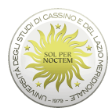
University of Cassino and Southern Lazio
-

University of Campania Luigi Vanvitelli
-
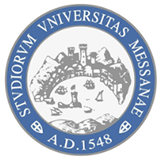
University of Messina
-
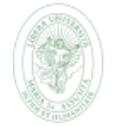
Libera Universita degli Studi Maria SS. Assunta di Roma (LUMSA)
-
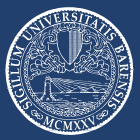
University of Bari Aldo Moro
-
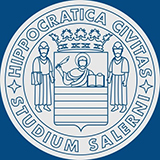
University of Salerno
-
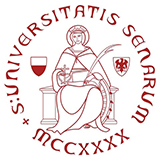
University of Siena
-
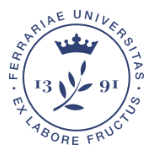
University of Ferrara
-
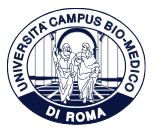
Campus Bio-Medico University of Rome
-

University of Genoa
-

Mesoamerican University
-

Istmo University
-

Mariano Galvez University of Guatemala
-

Regional University of Guatemala
-

Galileo University
-

Francisco Marroquín University
-

Rafael Landívar University
-

University of the Valley of Guatemala
-

University of San Carlos of Guatemala
-

Technological Institute of Tlaxcala Plateau
-

Golfo University
-

Technological University of South Sonora
-

Technological University of Huejotzingo
-

Tizimín Institute of Technology
-

Chilpancingo Institute of Technology

